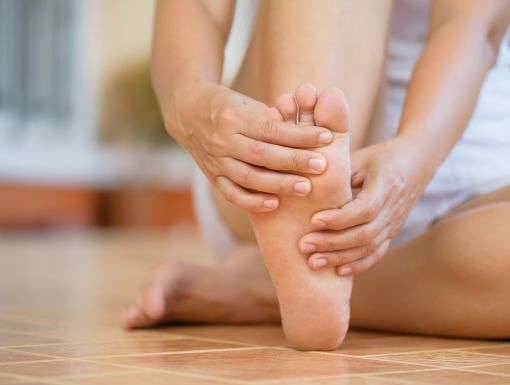
Ingrown Toenails: Causes and Treatment
If you have ever had an ingrown toenail, you know how painful it can be to stand or walk. There are steps you can take to prevent it from happening again.
Ingrown toenails are a common foot condition that can often leading to irritation and swelling.
An ingrown toenail develops when the corner of the toenail grows down into the skin and usually affects the big toe. Ingrown toenails often happen when people cut their toenails by tapering the corner of the nail. If the toenail curves with the shape of the toe, it can grow into your skin. Ingrown toenails don’t usually pose a health risk to healthy people.
An ingrown toenail can also feel hard and swollen. If the nail grows into the skin, or the skin grows over the nail edge, bacteria can enter causing an infection.
An ingrown toenail can have many causes:
- Incorrectly cut toenails - If you cut your toenails too short or rounded, the nail may grow into the skin
- Improperly fitting shoes
- Tearing the corner of the nail
- Toe trauma, such as banging your toe or getting stepped on
- Congenital (your foot shape) — For instance, if your nail is larger comparatively with your toe, or if the surrounding tissue of the nail border naturally grows around your nail
If you do develop an ingrown toenail, the symptoms can be easy to recognize. It is important to note that if you notice signs of infection, or have diabetes or another condition that causes poor blood flow to your feet, see your doctor right away.
Symptoms of an ingrown nail include:
- Pain
- Swelling
- Redness around a toenail, usually the big toe
- The sharp end of the nail will be pressing into the flesh on one or both sides of the nail
- Pus coming from the area around your nail
- Bleeding
If you have an ingrown toenail, do not attempt to cut it yourself. If you cut the nail, the condition may get worse.
How is an ingrown toenail treated?
You can treat an ingrown toenail at home. These steps help control infection and prevent further pain:
- Soak the foot in warm water and Epsom salts twice daily
- Keep the foot dry the rest of the time
- Gently lift the edge of the nail and place some cotton or dental floss between the nail and the skin. Change the pad every day
- Use an antibiotic cream and a bandage
- Wear comfortable shoes or sandals with room to move your foot.
- Use pain relievers such as ibuprofen or acetaminophen, if needed.
If home remedies haven't helped your ingrown toenail, your doctor may recommend a partial removal of your toenail or, if the problem persists, removing the nail and the underlying tissue.
If left untreated, an ingrown toenail infection can cause an infection in the bone in your toe. A toenail infection can also lead to foot ulcers, open sores, or a loss of blood flow to the infected area.

-nails-d10df263c2.jpg)

